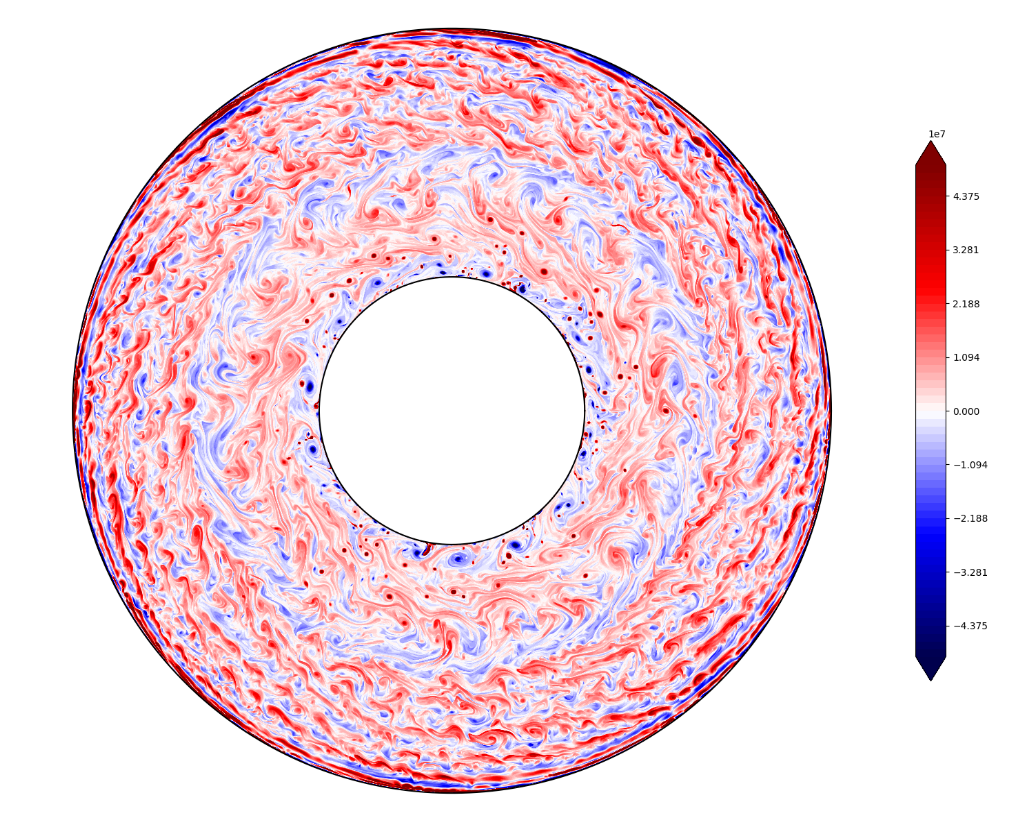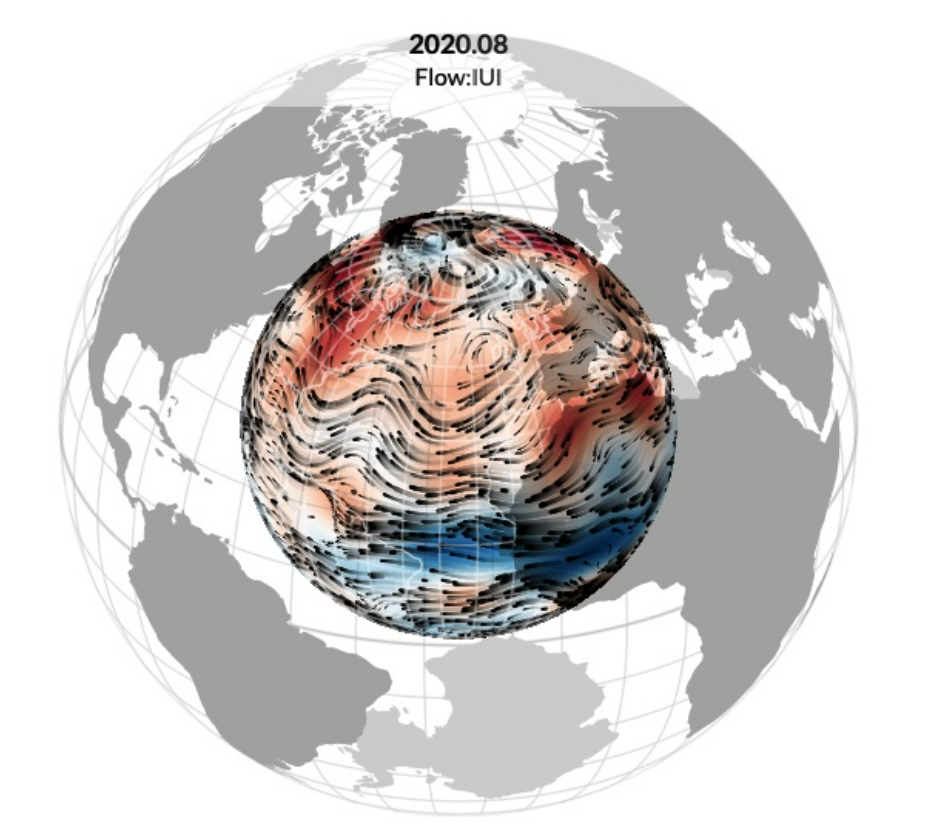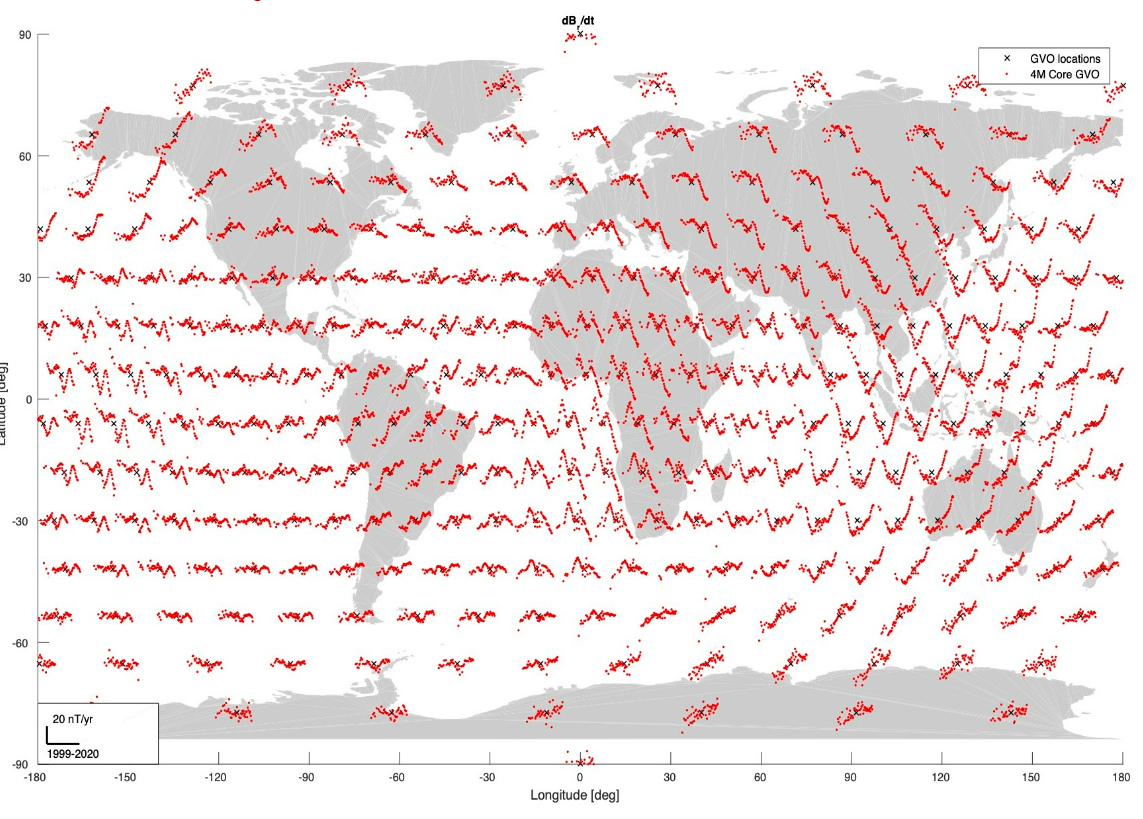Earth physics and computational modelling
Study of global-scale geophysical processes using satellite observations, computational models, inverse theory and machine learning. A particular focus is exploiting magnetic observations as a tool for improving our understanding of the Earth, including the core geodynamo process, lithospheric magnetization structures, ocean flows and ionospheric currents. To support these efforts we build high resolution time-varying models of Earth's magnetic field, including the well known CHAOS geomagnetic field model.

Projects include:
CHAOS geomagnetic field model
Funding: ESA DISC
The CHAOS geomagnetic field model is a leading time-dependent, high resolution, global model of the near-Earth geomagnetic field. It is based primarily on data from the CHAmp, Oersted, and Swarm satellites, as well as from ground observatories. It spans from 1999 to presented and is used for a variety of scientific purposes, including studies of the geodynamo process in Earth's core, lithospheric magnetization and quiet-time magnetospheric field variations. Measurements from ESA's Swarm satellites are today the crucial data source used in constructing high quality models of Earth's magnetic field, and we regularly update the CHAOS model using the latest measurements made by the Swarm satellites.
Read more here: Magnetic_Field_Models

CoreSat: Dynamics of Earth's core from multi-satellite observations
Funding: ERC grant
This project aims to undertake high risk, high gain research in order to: (a) Reveal small scales and rapid time changes of the core-generated magnetic field (b) Test whether rotation-dominated core convection explains the recent time-dependence of the South Atlantic Anomaly.
Read more here: CoreSat

4D Deep Earth
Funding: ESA Swarm+ STSE
Investigations of rapid (interannual) core dynamics using data collected by the Swarm satellites, ground observatories and earlier satellite missions. Numerical simulations of the geodynamo process and reduced quasi-geostrophic models are used as tools to improve our understand of observed rapid field changes. Core-mantle coupling processes and consequences for changes in the length-of-day are also studied. Project partners: IsTerre, Grenoble (France), ETH Zurich (Switzerland), DTU Space (Denmark), IPGP, Paris (France), Univ. Leeds (UK).
Read more

GVO: Geomagnetic Virtual Observatories
Funding: ESA / Swarm DISC+
This project involves the construction of Geomagnetic Virtual Observatory time series of the vector magnetic field on a global grid of 300 equal area distributed locations at satellite altitude, with 1 month and 4 month cadence, derived from Swarm and earlier satellites missions. Such series provide a useful compression of satellite magnetic data suitable for investigations of secular variation, core flow inversions, and for data assimilation studies of the core dynamo process. The GVOs data products also provide valuable information to those interested in investigating magnetospheric and ionospheric magnetic signals on timescales of months and longer. Project partners: BGS Edinburgh (UK)
Read more here: Geomagnetic-Virtual-Observatories
